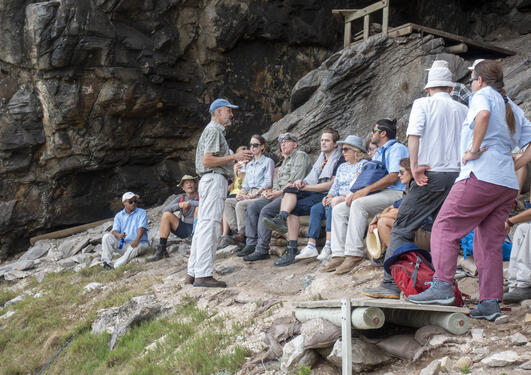Human Cognition in African Middle Stone Age
Our mental capacities have allowed us to thrive, to investigate and invent, and even to transform our environment like no other animal species since the origin of life on Earth. But exactly when, how, and why did our ancestors begin to “think” differently?

Main content
Cognition itself leaves no direct traces in the archaeological record. Consequently we rely on inferring the abilities required for and involved in producing the artefacts and behaviours unearthed by archaeologists. We also draw on a variety of disciplines, ranging from anthropology to neuroscience, to interpret those findings.
Human Evolution
Our species has spread to all corners of the planet, we have domesticated hundreds of animals and plants, invented complex systems of communication and devices to travel by land, sea, and air, and even explored other planets. Present-day human cognition is a product of evolution, and it has changed substantially over time. In the 6 million years since the human line separated from its closest primate relatives, the chimpanzees, ancestral human species learned to make stone tools, began to hunt in groups, and became social and cooperative. Some, like the Neanderthals, even learned to control fire, to make complex tools, and likely to communicate through language.
Human Activities
The first members of our own species, Homo sapiens, appeared in Africa only some 300 000 years ago, but over the course of our relatively short history, we have accumulated an almost infinite array of cultures and behaviours that go way beyond what those other human species were capable of.
Take the excavation site at Blombos Cave in South Africa as an example. Today, it offers a snapshot of the lives of humans who lived in Africa during a period archaeologists call the Middle Stone Age (MSA), between 70 000 and 100 000 years ago. The inhabitants of Blombos left behind what now constitutes the earliest evidence for activities that we consider typical of H. sapiens, such as the exploitation of diverse resources, the production of colour pigments, the use of personal ornaments, the creation of systems of graphic communication, and art. Yet, what made all of this possible?
Human Cognitive Milstones
To answer this question, we aim to go beyond simplistic explanations that attribute all achievements to a single factor such as language, sociality, hunting, or technology. Human cognition is not only about how we think, but also about how we perceive and act on the world, and it is influenced by culture, language, and environment. By combining insights across a range of disciplines, our research group hope to gain a more in-depth understanding of the contexts and forces that have shaped—and are still shaping— human cognition, and that gave rise to the cognitive milestones of our species during the MSA.






